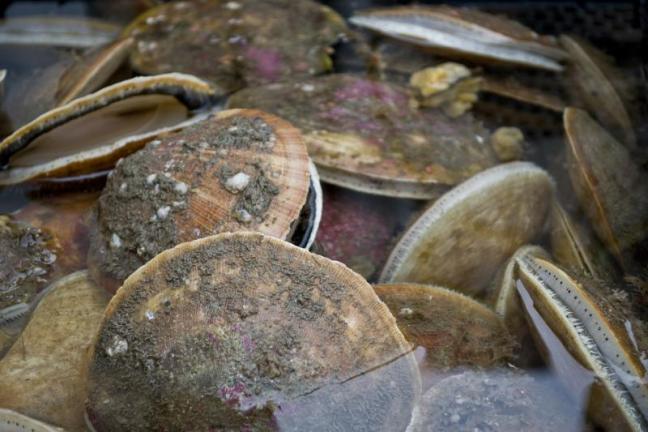Scallops Need More Than Great Management to Weather Future Ocean Change
Under worst-case ocean acidification impacts, the sea scallop fishery could decline more than 50%—but big cuts to CO2 emissions could save our scallops.

How do you take a marine population that’s doing well and make sure it can continue to thrive in a warming, acidifying future? That’s the question my colleagues and I asked ourselves as we began our study of the U.S. Atlantic sea scallop fishery in 2012, supported by grants from NOAA and the WestWind Foundation. After all, this important fishery brings in more than $500 million in dockside sales each year, creating an economic engine sustaining several major Northeastern U.S. port cities. Six years later, we’ve finished our calculations, published our paper, and have shown that no matter how well-managed the sea scallop fishery is, cutting CO2 emissions is a key element of maintaining this fishery in the coming decades. There is widespread concern in the ocean science community that ocean acidification and warming will harm juvenile sea scallop development or survival, as we’ve seen with oysters, clams, and other bivalves living nearer to shore. Although damage to Atlantic sea scallops from acidification hasn’t been proven in the wild yet, we wanted to learn whether any sort of preventive management could be applied to keep this fishery healthy and productive over the coming decades in spite of environmental change.
The Atlantic sea scallop population is found in offshore waters from Virginia to Maine, and it is managed with a single uniform set of rules by the federal government. The fishery was brought back from an overfished state in the 1990s using the rules set out in the Magnuson-Stevens Fisheries Conservation and Management Act, and this very careful management has resulted in bountiful harvests of large scallops with high market values for nearly 30 years.
Annual New England Fishery Management Council sea scallop harvest plans incorporate information from several sources, including output from a model developed by NOAA’s Northeast Fisheries Science Center that uses information about things like the scallop population size and location to determine which areas can be open to fishing, and how many days of fishing can be permitted in any given year. My colleagues from Woods Hole Oceanographic Institution, NOAA’s Northeast Fisheries Science Center (NEFSC) and the University of Virginia used this model as a foundation for our work, adding in long-term trends in ocean acidity and temperature confirmed by ocean measurements and other, more complex ocean models, and adding sea scallop responses to these environmental changes.
In our most recent research, we looked at different levels of ocean acidification impacts on sea scallops, future climate scenarios that affect CO2 emissions to the atmosphere and economic development, different fishery management scenarios, and future fuel costs. By comparing the results from 256 different modeled combinations of these variables, we found that of these factors, management choices have the largest impact on scallop biomass and fishery outcomes. Even with strong management intervention, though, the sea scallop population can’t be completely protected against the long-term consequences of ocean change. The model showed that under worst-case ocean acidification impacts, the sea scallop fishery could decline more than 50%, but a scenario with strong CO2 emissions cuts could limit the scallop fishery decline to only 13% of present harvests. It’s clear from this study, where so many different factors were considered, that cutting CO2 emissions is the first and best way to safeguard valuable marine resources. Additional measures, like proactive management, will go a long way to maintaining healthy, viable stocks, but can’t be relied upon to make up completely for the damage caused by CO2 emissions.
If we continue on our current path of allowing reckless amounts of CO2 into the atmosphere, the sea scallop fishery could be in serious trouble—but’s not too late to change course. Ocean Conservancy is working with governments and other non-profits to push for major reductions in CO2 emissions to ensure that we can keep tasty scallops on dinner plates for generations to come.